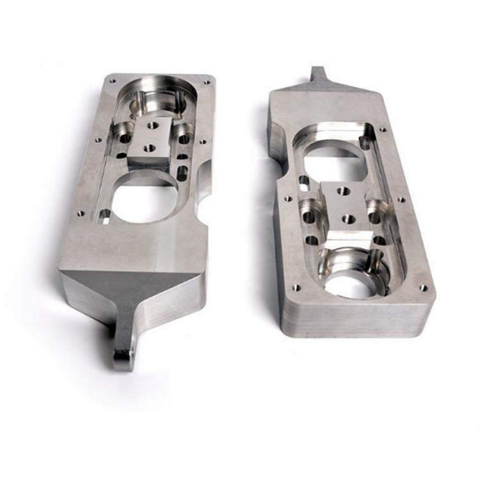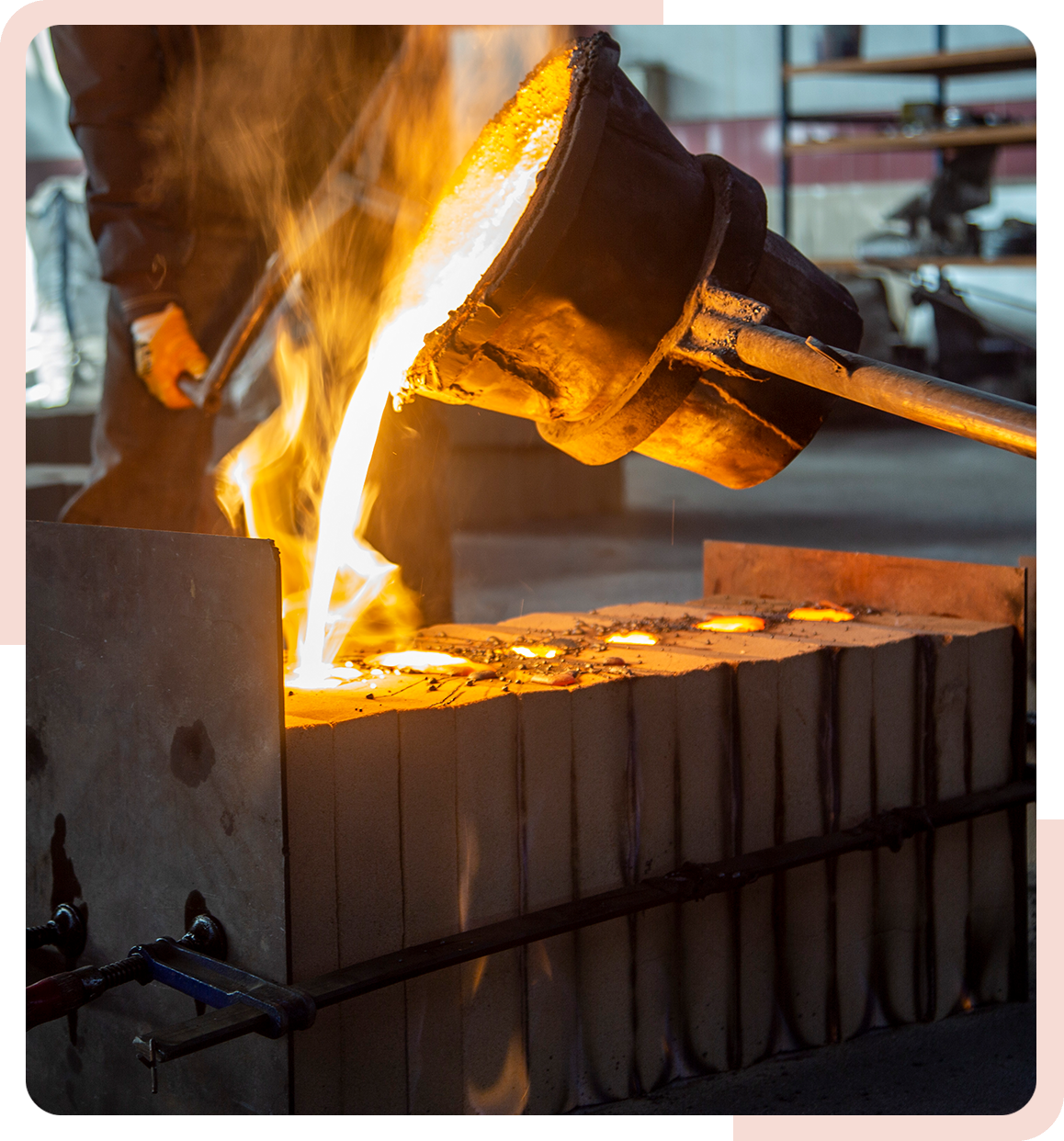How Aluminum Casting Company Essential in the Aerospace Industry
Aluminum Casting Explained: Key Truths and Insights for Sector Professionals
Aluminum casting functions as a crucial process in contemporary production, forming components throughout various sectors. Its diverse approaches, such as sand and die casting, satisfy various production demands. The distinct homes of aluminum alloys boost their applicability, yet tests stay in keeping top quality and efficiency. Comprehending these elements is crucial for industry experts. What are the most up to date developments and ideal methods that can further optimize this procedure?
Summary of Aluminum Casting Processes

Crucial element of aluminum casting processes consist of the preparation of molds, which may be made from sand, metal, or ceramic materials, depending upon the planned usage. In addition, temperature level control is crucial to guarantee appropriate melting and solidification of aluminum.
The casting procedure enables complex styles and can accomplish high levels of dimensional accuracy. As soon as cooled, the spreadings might go through ending up operations such as machining or surface therapy to meet particular performance standards. In general, aluminum casting functions as a functional manufacturing technique, effectively meeting the diverse requirements of numerous sectors.
Kinds Of Aluminum Casting Methods
In the domain of aluminum casting, numerous approaches are used to achieve various outcomes. Sand casting strategies provide adaptability and cost-effectiveness for complicated shapes, while die casting processes use high accuracy and performance for mass manufacturing. Understanding these methods is vital for picking the proper technique based upon task demands.
Sand Casting Strategies
Sand casting strategies represent a fundamental approach in aluminum casting, where sand is utilized as a mold and mildew material to shape liquified metal. This process includes producing a pattern from the preferred component, which is then put in a sand mixture to form a mold. The sand is compressed around the pattern, and after elimination, it produces a tooth cavity in the form of the component. Molten aluminum is put right into this cavity, allowing it to solidify and cool. One substantial advantage of sand casting is its convenience; it can accommodate big elements and intricate shapes. In addition, the products used are relatively low-cost, making it an available option for numerous manufacturing applications in the aluminum sector.
Die Casting Processes
Die casting processes are a famous method for shaping aluminum elements, making use of high-pressure methods to require liquified steel into specifically crafted molds. This process is particularly preferred for its capacity to produce complex shapes with limited tolerances and a smooth finish. There are two primary sorts of die casting: warm chamber and cool chamber. Warm chamber die casting is appropriate for metals with reduced melting factors, enabling faster manufacturing rates. Conversely, cool chamber die casting is perfect for greater melting factor metals, requiring a separate melting heating system. Both methods boost performance and reduce material waste, making them vital in auto, aerospace, and durable goods sectors. Recognizing these processes assists experts choose the most ideal method for their details applications.
Product Properties of Aluminum Alloys

Stamina and Durability
Strength and longevity are crucial attributes of aluminum alloys that make them ideal for various casting applications. These materials show a desirable strength-to-weight ratio, permitting the production of lightweight yet durable components. When it come to tensile toughness, particular aluminum alloys can be engineered to stand up to significant loads without flawing. This property is specifically crucial in markets such as aerospace and automotive, where efficiency and security are extremely important. Furthermore, aluminum alloys often maintain their mechanical homes under diverse temperature problems, making certain consistent efficiency. The innate ductility of these alloys likewise enables reliable shaping during the casting procedure, making it much easier to generate intricate geometries. Overall, the toughness and resilience of aluminum alloys contribute considerably to their prevalent use in sophisticated applications.
Deterioration Resistance Characteristics
While aluminum alloys are valued for their toughness and lightweight buildings, their deterioration resistance is another vital attribute that boosts their viability for numerous applications. Aluminum naturally develops a protective oxide layer when exposed to moisture, which aids to protect against further oxidation. This inherent home makes aluminum alloys particularly useful in settings susceptible to corrosion, such as aquatic and commercial settings. In addition, different alloy make-ups can affect resistance degrees, with particular alloys specifically crafted to improve this characteristic. Treatments like anodizing can even more enhance rust resistance by enlarging the oxide layer. Understanding the deterioration resistance of aluminum alloys is vital for sector experts when choosing products for jobs needing sturdiness and durability in challenging settings.
Advantages of Aluminum Casting in Production
Aluminum casting offers countless advantages in manufacturing, making it a preferred option for different industries. One substantial advantage is its lightweight nature, which adds to decreased transport costs and enhanced energy efficiency in final product. Furthermore, aluminum's exceptional thermal and electrical conductivity enhances capability in applications needing warm dissipation or electric conduction.
The material's capacity to be cast into detailed shapes enables for style versatility, minimizing the need for extra machining procedures. In addition, aluminum casting displays exceptional rust resistance, causing longer item life expectancies and reduced upkeep prices.

Usual Applications of Aluminum Castings
The convenience of aluminum casting allows its widespread use throughout different markets. Usual applications include automobile components, where lightweight and corrosion-resistant elements, such as engine blocks and transmission housings, boost vehicle performance. In the aerospace industry, aluminum spreadings are made use of for architectural components, supplying stamina without including considerable weight.
Additionally, the electrical industry advantages from aluminum castings in making enclosures and warmth sinks, where thermal conductivity is necessary. The customer products market also incorporates aluminum spreadings in products like cooking equipment, furnishings, and ornamental things, integrating visual appeals with capability.
Additionally, the building and construction sector employs aluminum spreadings for architectural aspects, window structures, and fixtures, which supply toughness and design versatility. Generally, the diverse applications of aluminum castings underscore their importance in modern manufacturing, adding to improvements in performance and item style across numerous areas.
Innovations and Technical Developments
As industries remain to develop, technologies in aluminum casting technology are transforming production processes and product capabilities. Advancements in 3D printing and additive production have actually made it possible for the creation of complicated geometries that were formerly difficult to achieve with conventional techniques. These innovations permit fast prototyping, reducing preparations and prices.
Furthermore, improvements in mold style and materials have actually boosted the casting procedure by enhancing effectiveness and decreasing waste. The assimilation of clever manufacturing strategies, such as IoT tools and real-time information analytics, permits far better tracking and optimization of manufacturing criteria, leading to higher high quality results.
Growths in aluminum alloys provide improved stamina, deterioration resistance, and light-weight homes, providing to the growing needs in auto and aerospace sectors. Jointly, these technologies are not only boosting efficiency however also satisfying the extensive standards of contemporary check this site out engineering applications.
Finest Practices for Quality Assurance in Aluminum Casting
Making sure high-grade outputs in aluminum casting requires adherence to finest methods that include different phases of the manufacturing process. click this link Thorough material examination is essential to validate the quality of aluminum alloys utilized, as impurities can considerably influence the last item. Executing specific melting and putting techniques decreases problems; maintaining excellent temperatures prevents oxidation and advertises uniformity.
Moreover, mold layout plays an important role; utilizing computer-aided style (CAD) can boost accuracy and lower human mistake. Regular tracking of the cooling procedure is essential to prevent bending and contraction. In addition, utilizing non-destructive testing approaches, such as ultrasonic or X-ray evaluations, helps determine inner imperfections without damaging the components.
Finally, establishing a comments loophole with designers and drivers cultivates continual renovation, ensuring that high quality control actions evolve together with technological advancements. By following these best methods, suppliers can enhance the reliability and efficiency of aluminum spreadings.
Often Asked Concerns
What Are the Environmental Influences of Aluminum Casting?
The environmental influences of aluminum casting consist of substantial energy intake, greenhouse gas emissions, and potential water pollution from foundry procedures. Additionally, bauxite mining for aluminum ore can result in habitat devastation and soil deterioration.
How Does Aluminum Casting Compare to Various Other Steel Casting Processes?
Aluminum casting normally provides advantages in lightweight components and rust resistance compared to various other processes, such as iron or steel casting, which may give higher toughness yet lead to much heavier and less corrosion-resistant items. - Aluminum Casting Company
What Are Usual Problems in Aluminum Castings and Their Reasons?
Common flaws in aluminum spreadings consist of porosity, shrinking, and inclusions. Reasons typically originate from improper putting methods, poor mold style, or contamination of the liquified metal, impacting the end product's honesty and performance.
What Security Safety Measures Should Be Taken Throughout Aluminum Casting?
Throughout aluminum casting, vital security precautions consist of putting on safety gear, making sure correct air flow, preserving a clean work area, dealing with liquified steel with care, and complying with well established procedures to decrease threats of burns, breathing risks, and mishaps.
How Can I Enhance the Efficiency of My Aluminum Casting Workflow?
To enhance performance in aluminum casting procedures, one should enhance mold layout, enhance material handling, utilize automated processes, conduct regular upkeep on tools, and purchase worker training to boost skills and performance.
Numerous approaches exist, aluminum casting incorporates several key procedures that provide to various applications and requirements. Secret elements of aluminum casting procedures consist of the prep work of mold and mildews, which may be made from sand, metal, or ceramic materials, depending on the meant use. Sand casting strategies represent a basic approach in aluminum casting, where sand is made use of as a mold and mildew product to form liquified steel. As industries proceed to evolve, technologies in aluminum casting innovation are transforming production processes and item capacities. Making sure high-quality outputs in aluminum casting needs adherence to finest practices that encompass click for more various phases of the production process.